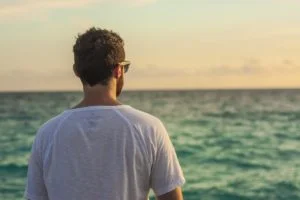
Sierra Negra, the Second Largest Crater in the World! | Travel Blog
One of five active volcanoes on the island of Isabela, Sierra Negra, is one of the oldest of the island and the largest in the Archipelago. It is believed to have been created from a mantle plume that created the hotspot. It is the second largest caldera (volcanic crater) in the World behind only the vast caldera at Yellowstone National Park in the United States and its age has been hard to determine but eruption rates suggest that Sierra Negra is over 500,000 years old. It’s a mysterious and majestic landmark and amongst the major Galapagos Islands tourist attractions.
It is also one of the most active volcanoes in the Galapagos Islands, having erupted ten times since 1813. The last major eruption was in 1979 and the latest eruption took place in 2018. The steep upper slopes give it the inverted soup bowl shape crater that is common to many active volcanoes, especially those around the Galapagos Islands and in the Hawaiian islands. There is also a large rift that runs from the northeast to the southwest, deflecting around the crater. The rift systematically vents and spills out lava, as was the case in the 1979 eruption.
The majority of the 2100 inhabitants of Isabela live in the town of Puerto Villamil on the southern shore of the volcano. Consequently, the eastern side of the volcano is partly used for agriculture, with fishing the initial activities of the island’s population. Those involved in farming were one of the sources of nonnative species including cattle and goats, some of which escaped and became feral, other sources were sailors who released goats to provide a source of fresh meat on future trips.
Perhaps the most important animal species in the Sierra Negra area is the Giant Tortoise Chelonoidis Nigra guentheri, which characterizes for having a saddleback shell and lives mostly on the south eastern slopes of the Volcano. This species is endangered due to population pressure brought on by habitat alteration, hunting and predation by feral mammals. The National Park authorities takes the preservation of this specie very seriously whit permanent efforts to control infestation of other introduced animals.
As far as visiting this spectacular Volcano on a tour, it can be done with a 4-hours hike/walking tour with relatively short uphill hiking through lush fern-covered trees. Once at the crater’s rim, the views of the 6-miles caldera are overwhelming. While you continue your hike, vegetation gets drier as you advance until “Chico” Volcano which is a collection of small craters that erupted during the 1970’s so you can still see the fumaroles. From here, the views of Elizabeth Bay are stunning as well. Your guide will be permanently explaining how vegetation and animal live thrived in this harsh terrain and also will tell you about the Volcano’s geology (and Isabela Island) while you enjoy magnificent views and enchanting landscapes.
So if you are in Puerto Villamil (Isabela Island) or plan to visit it during your trip, a visit to Sierra Negra Volcano is a must as you will definitely love the location and the natural and geological marvels that offers its guests and such trips are easy to arrange in advance or on-site. Also, some sailing cruises do offer a visit to the Volcano as part of their complete itineraries in the Islands so we recommend checking our yacht & cruises section to see which cruise options are more suitable for a memorable experience that includes visits to the Western part of the enchanted Archipelago.
Take a look of these tour programs:
1. Peru Tour: Lima and Machu Picchu Tour
2. Wildlife Tour: Amazon Wildlife spotting tour
3. Santa Cruz Island Tour: Galapagos land tour from Santa Cruz
4. Adventure Tour: Snorkeling tour in Galapagos
5. Galapagos Cruise Itinerary: High-End Vessel Exploring Genovesa and Central Islands
Check Our Suggested Tours:
Check Our Galapagos Cruises:

